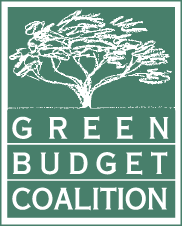Total Recommended Investment: $1.045 billion over seven years, coupled with redirecting $2.55 billion in existing funds to achieving Target 2.
This investment is to ensure that by 2030 at least 30% of areas of degraded terrestrial, inland water, coastal and marine ecosystems are under effective restoration to enhance biodiversity and ecosystem functions and services, ecological integrity and connectivity. [NRCan, ECCC, PC, DFO, AAFC]
Context: Robust efforts and a highly ambitious plan are required to meet Target 2 in the Kunming- Montreal Global Biodiversity Framework (KMGBF) to restore 30% of degraded habitat on land, in freshwaters, and along our coasts, as well as to meet the Bonn Challenge to restore 19 million hectares of terrestrial ecosystems. Achieving Canada’s restoration goals will require:
- A commitment of funds and the establishment of targets for the restoration of degraded lands, coastal areas, and freshwater habitats;
- The support and mobilization of land and water stewards with jurisdiction and authority over degraded habitats (Indigenous Peoples, federal- land stewards, land stewards in other levels of government, private landowners);
- Policies and programs ensuring benefit sharing with Indigenous Peoples in the restoration economy;
- An increase in the number of trained restoration professionals working to identify and apply the restoration approaches necessary to achieve the targets for specific regions and habitats (e.g., on land: active and passive restoration, fire, revegetation, invasive species control); and
- Establishing the regional demand for restoration materials (primarily seeds and trees) so that a regionally appropriate supply of materials can be built over time.
Create a restoration coordinating body
The coordinating body would drive collaboration within the federal government and across governments and sectors, support work to define baselines and set targets, and work toward the following goals:
- Improving the integration of existing restoration programs to measure impact and maximize cross jurisdictional efforts;
- Supporting work to direct and expand existing funds, or establish new funds;
- Developing clear national degraded-habitat restoration targets in the National Biodiversity Strategy and Action Plan (NBSAP);
- Developing policies favouring and promoting use of local, native plants in restoration and reclamation;
- Creating a robust native-seed supply that does not deplete natural seed sources;
- Supporting Indigenous-led restoration and Indigenous participation in the restoration economy, including the native seed and tree supply system; and
- Supporting the agricultural sector to contribute to the restoration of degraded habitat, for example on marginal lands and riparian areas, and to build a native seed supply on agricultural lands.
$20 million over six years [NRCan or ECCC]
Support a national seed supply for land-based restoration
For Canada to meet Target 2, approximately 95 million kilograms of ecologically appropriate native grass and wildflower seed would be required. Current supply is insufficient.
- Support Indigenous-led native seed-needs assessment and priority setting for restoration.
- Build horticultural capacity within Indigenous communities to enable more equitable participation in the restoration economy.
- Create an inter-departmental working group to pinpoint native seed needs for federal land restoration and address procurement and funding timeline barriers to provide assurance of demand to the native seed industry.
- Create and staff native plant materials development centres in each priority place to collect and track wildtype seed and coordinate seed supply with local producers.
- Support regional native plant restoration jobs training and best-practices guidelines.
- Develop an ecoregional seed tracking and labeling program (in collaboration with the Canadian Seed Growers Association and/or the Society for Ecological Restoration (SER)) at no cost to native plant producers.
$50 million over six years [NRCan, AAFC, ECCC]
Direct and establish funds to achieve Canada’s restoration goals
$3.53 billion over seven years:
- $2.55 billion in existing funds,
- plus $975 million in new funding
Directing existing federal and provincial/territorial program funds toward achieving the following goals, while being supported by key infrastructure and capacity, would go a long way:
- Using existing funds to contribute to Canada’s goals for the restoration of degraded terrestrial and aquatic habitat. $2.55 billion over seven years [multiple departments, see table below]
- Establishing the Canada Target 2 Restoration Fund to restore degraded terrestrial habitat that is not included within the Nature Smart Climate Solutions Fund or the 2 Billion Tree program. $500 million over seven years [ECCC, NRCan]
- Establishing a new Habitat Infrastructure Renewal Fund to upgrade and extend the lifespan and functionality of existing conservation assets on public and private lands. This fund will protect and enhance their climate and biodiversity benefits. $150 million over four years [ECCC]
- Establishing a new funding stream to implement Agriculture and Agri-Food Canada (AAFC) Living Labs techniques for best practices to restore degraded habitat for on-farm carbon sequestration. $25 million over five years [AAFC]
- Expanding the Aquatic Ecosystem Restoration Fund to include coastal and inland habitat and support a federal program to:
- Build and sustain partnerships to restore degraded or destroyed fish habitat in priority watersheds and for priority species;
- Support the development and implementation of regional habitat restoration plans;
- Increase the capacity of Indigenous and non- governmental organizations to deliver high- quality fish-habitat restoration projects;
- Restore and improve fish habitat through cost-shared projects identified by the regional restoration plans; and
- Establish a fish-passage program to restore access to habitat for focal species in priority watersheds.
$250 million over six years [DFO]
- Expanding the Parks Canada Conservation and Restoration Program to restore degraded terrestrial, freshwater, and coastal habitat within Canada’s system of National Park and National Historic Sites, including fully funding the Southern Alberta Seed Strategy for restoration. $50 million over six years [PC]
Download PDF to see the table allocating existing funds to contribute to Canada’s restoration goals and targets
